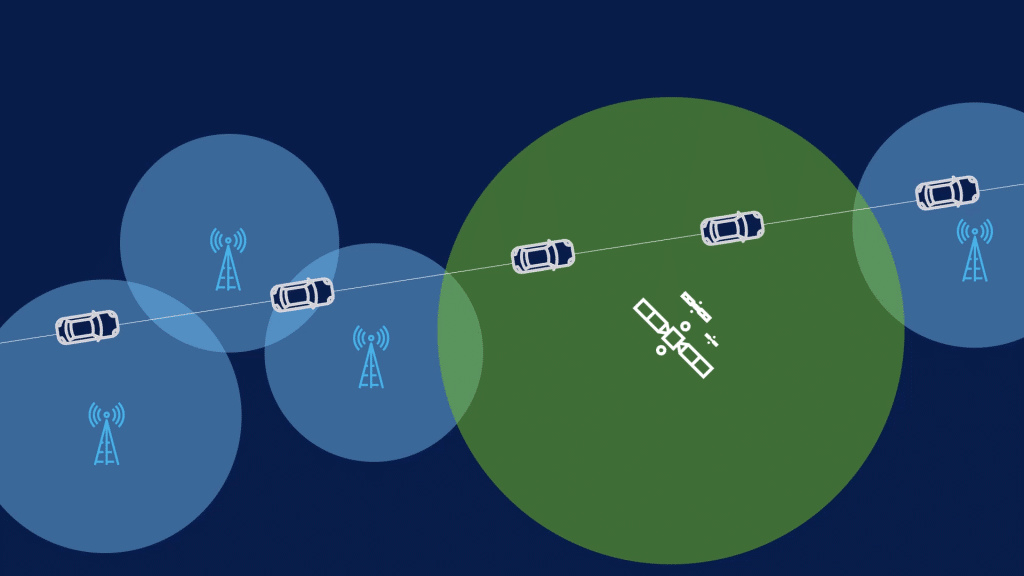Exploring Intelsat for Cellular Backhaul: Solar Powered, Quick to Deploy, 4G Ready
Intelsat Corporate Communications
Intelsat backhaul is powering 4G and 5G network expansion, enabling sustainability initiatives, and improving emergency response planning
For decades, satellite service has been used to enable cellular phone services around the globe. The combination of ease of deployment relative to fiber or microwave and predictable service levels have provided mobile network operators (MNOs) with a key tool to create resilient networks and extend infrastructure into remote and rural areas.
Exactly how MNOs use satellite has evolved over time, from high-throughput trunking in support of, say, a remote island network, to VSAT-enabled services directly connecting individual towers, to managed services like Intelsat CellBackhaul that relieve the MNO of the day-to-day management of satellite backhaul components.
The same changes in satellite services that give MNOs the flexibility to address more use cases are also opening up new opportunities for Towercos to distinguish their offerings and accelerate revenue earlier. Here are a few examples highlighting approaches that take advantage of the flexibility of satellite-powered cellular backhaul.
Shortening timelines for 4G network expansion
Rural 4G expansion is one of the biggest growth drivers for satellite backhaul. Timelines for 4G rollouts may be established by regulators or by an MNO’s own plans, and failure to meet timelines can result in loss of revenue, lower customer satisfaction, bad publicity, or fees and penalties.
It’s common that some remote sites will be supported with satellite backhaul well into the future. Other remote sites may eventually be connected through a fiber or microwave build-out, but that build-out could be months or even years away. Satellite’s deployment and service flexibility help address this problem; Tier-1 MNOs in Australia, DRC, Germany, and Brazil are among examples of Intelsat customers doing this right now.
Cells-on-wheels (COWs) can be deployed in the short term until more permanent tower infrastructure can be built, using the same predictable, SLA-backed CellBackhaul service. And once terrestrial backhaul services are eventually built out, CellBackhaul connectivity is easily moved or repurposed or can even serve as backup using the equipment that’s already there.
Delivering flexibility and speed for disaster planning and preparedness
COWs are used to support many other short-term cellular needs like adding capacity for large outdoor events and, especially, to deliver for post-disaster recovery efforts. Satellite backhaul is growing as a component of MNO disaster preparedness plans as planning increasingly shifts from if temporary fill-in connectivity will be needed to when it will be needed.
Time-to-deploy is key here. Whereas supporting something like a large weekend event, where the location and timing are known, allows for days or weeks to prepare, the element of the unknown and the increasingly crucial need for connectivity to support early disaster recovery efforts puts timeframes at mere hours.
In recent proofs-of-concept, a leading MNO in Germany used Intelsat CellBackhaul to address the twin requirements of fast deployment and rigorous service levels. They reduced time-to-network from days to just hours – with the same predictable service levels delivered to users during normal operations.
Intelsat’s solution allows MNOs to reserve service until needed and then quickly “go live” to meet first responder and community connectivity needs for hours, days, or weeks until permanent infrastructure can be repaired.
Solar- and satellite-powered towers delivering services off-grid
A key benefit of satellite backhaul is the ability to right-size connectivity for individual sites and avoid costly overbuilding of fiber or microwave capacity that could go largely unused. The efficient use of satellite communications is an important component in closing the business case for rural and remote deployments
Also helping to close the business case are standardized tower/RAN platforms that make installations quicker and easier. Increasingly this includes using solar-powered components to support off-grid regions. The combination of near-global coverage and self-sufficient designs allows towers to be put just about anywhere:
- AMN (formerly Africa Mobile Networks) builds, owns, and operates cellular network infrastructure across Africa, delivering services for the biggest MNOs in the region deep into rural areas with less MNO investment, less risk, and individual site deployments in as little as four hours. Key to their network-as-a-service model is a standard RAN design integrating power, Intelsat satellite backhaul, and the local access network.
- TIM Brazil, one of the country’s largest Tier-1 operators, uses Intelsat’s satellites to power its Sky Coverage project to bring sustainable connectivity to off-grid sites in the more distant areas of Brazil. The project leverages a solar-powered tower design that acknowledges the infrastructure realities of many remote areas and complements TIM’s own sustainability goals.
With more opportunities to diversify, Intelsat is developing services to better address Towerco (and their customers’) needs. In addition to the previous examples, CellBackhaul customers are looking to Intelsat to support:
- Growth in the number of towers for both regional expansion and local densification
- Private cellular projects
- SLA-backed backhaul as well as “best effort” services, depending on customer needs and changing expectations
- Tower and utility infrastructure monitoring with satellite enabled Industrial IoT
With Intelsat’s ongoing innovation, both Towercos and MNOs have a growing menu of options to enable revenue earlier and address increasing demand for sustainable, speedy, and flexible solutions.






















